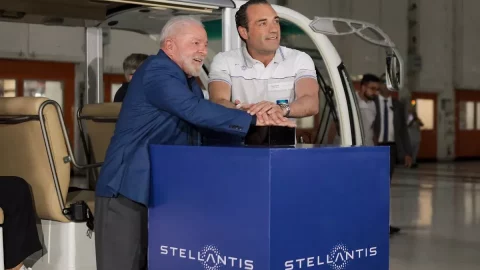Back to basics for Squid. The president of Brazil, recently re-elected for the third time and now 77 years old, has not forgotten his long past as union leader in the engineering sector, which has led him to be the leader of the left for over 30 years now, and has recently placed two moves to raise theautomotive industry. The first, substantial: the government has just launched the return of the so-called "popular car”, the popular automobile, i.e. a bonus for buying some models, based on a table that provides for greater discounts based on energy consumption and the fuel used.
Lula focuses on popular cars: Fiat in pole position
The deductions in some cases are substantial, we arrive almost 15% and to benefit the most are some models of the Italian brand Fiat, historically well rooted in the Brazilian market. In particular the Fiat Mobile Like, a super-utility car produced in the South American country and which today becomes the cheapest car of all: it can be bought for just over the equivalent of 10.000 euros. This model belongs to the same family as the Uno and Panda and is the leader in the A segment.
Important bonus also for the Fiat Argo 1.0, another very popular model in Brazil (in 2021 it entered the top 5 of the best-selling cars in the country), which thanks to the initiative personally desired by Lula will now cost around 12 euros, 2 less than the list price. The popular wagon is also about to give birth to a Italian-French derby, in some cases within the same family stellantis given that among the beneficiary brands there are mainly Peugeot and Citroen, as well as Renault and Volkswagen.
But the superbonus for the car in Brazil sparks controversy
However, the measure has been much discussed. Meanwhile, for the modality: the bonuses, which have also gone out of fashion in Italy with pentastellate governments, especially during the pandemic, remain a formula that does not entirely convince insiders. And then there is the cost, not indifferent, and which falls on everyone: the operation costs 1,5 billion reais, about 300 million euros, and to finance it, the price of diesel has been increased by 11 cents of reais. So according to part of the press it's a dog chasing its tail: saving on the purchase of a car, but spending more on fuel.
Not to mention that the discounts, however significant, are not sufficient to make the car accessible to poorest sections of the population, to which in theory the provision would be intended. In fact, the maximum is reached at 10/12 thousand euros, while in Brazil the minimum wage is equivalent to less than 300 euros. However, the poor also pay taxes and petrol, the press points out, and, moreover, there are no bonuses based on income bracket. Put like this, it looks more like one discount for middle-class citizens who want to change the car. Among other things, encouraging the purchase of private cars does help an industry in difficulty (in Brazil, registrations dropped by 30% from April to May), but it is in total contrast with the environmental objectives, above all because the discount table only partially rewards electric or hybrid vehicles, which are in any case a minority. Not to mention that the bonus actually also concerns the purchase of more polluting vehicles, such as coaches and trucks, and that petrol, again at the behest of the Lula government which has imposed a different pricing policy in Petrobras, has a very competitive price, which certainly does not discourage the use of private vehicles.
Lula visiting Stellantis in Goiana, inaugurates the new Ram pick-up
However, the measure is there, and time will tell what kind of advantages it will have brought in terms of revenues and employment for the manufacturing companies, including Fiat which is also present in Brazil as Stellantis. A few days ago Lula visited, symbolically, his own the Stellantis factory in Goiana, in Pernambuco (the president's home state): an automotive hub that he himself inaugurated in 2010, before being overwhelmed by the Lava Jato scandal, and which today employs 13 people in one of the poorest areas of Brazil. At the time Lula wanted to make it the production center for Fiat-branded "carros populares", then the merger with Chrysler changed the plans and the Jeep line was produced in Goiana. Today, triumphantly received by the president of Stellantis Sudamerica, Antonio Filosa, Lula attended the inauguration of the production of Ram Rampage high-end pickups, manufactured for the first time outside North America and involving more than 800 engineers and technicians in Brazil to design it.
A triumphant welcome but environmentalists are lurking
In his Pernambuco Lula was welcomed in celebration, and obviously Stellantis thanks for the new incentives. Above all Fiat, which was the best-selling car brand in Brazil in 2022, with 430 units, thanks above all to the Strada model, and also achieved the record for turnover, with the equivalent of 9 billion euros. But President Lula remains under observation on environmental issues: the plan against the deforestation of the Amazon is better than that of his predecessor Bolsonaro but still insufficient, and then in Brazil the concession that will most likely be given to Petrobras to extract more oil at the mouth of the Amazon River is causing a lot of discussion: a move necessary to increase production, but symbolically devastating for the image of a government that sells itself as an environmentalist to the international community.





